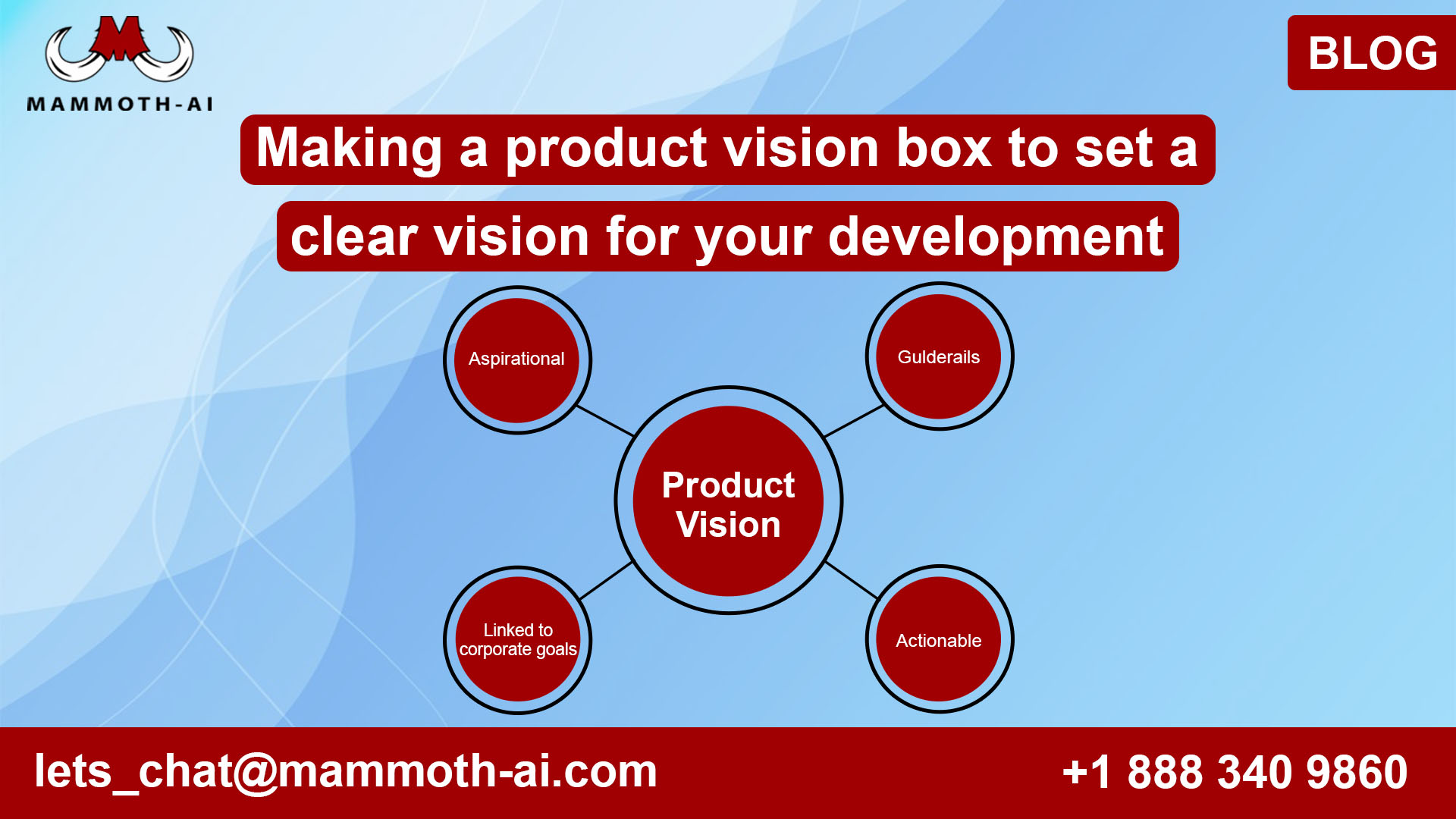The creator’s vision is at the heart of all innovation, whether in the arts or science and technology.
The concept of what the end product will look like, in software development words, is what motivates a full team to work together to make the Product Owner’s vision a reality.
But here’s the tough part: how do we turn that vision that’s floating around in someone’s head into a common goal for the entire team?
We want the team to truly own the vision and put their full weight behind the organization’s endeavor to produce the new product, not just express it in words and diagrams and transfer an intellectual comprehension of the overall idea.
We require a hands-on, collaborative exercise that will assist team members in defining and internalizing the vision.
The product vision box technique discussed in this article, in my opinion, is one such technique that creates enthusiasm among all stakeholders and helps them organize their efforts toward a single goal.
Introducing the product vision box exercise
Jim Highsmith’s product vision box is a basic yet effective tool that can be utilized by both agile and traditional project teams.
This exercise is frequently done at the start of a new project and involves a number of stakeholders from different parts of the company, including consumers.
The product vision box’s core concept is to construct a physical box that must be utilized to sell the product. A cereal box is the most typical analogy used to explain this exercise.
Are you thinking of your favorite cereal brand? What do you think of it?
Each side of the box offers information summarizing the cereal’s benefits and qualities. The name, emblem, and motto, as well as a couple of bullet points highlighting the brand’s key features, are all on the front. More specific information on the product’s ingredients and qualities, as well as some history about the product or company, can be found on the back. Additional information about the cereal brand can be found on the box’s sides.
What if I told you that you had to describe your product using the same format as a cereal box? The product vision box exercise presents a particular difficulty in this regard.
How to make your product vision box
Don’t let the fact that it looks like an arts and crafts session deceive you. The product vision box can provide deep insights into your product while also assisting your team in grasping the vision in a concrete and memorable manner.
Typically, a team will be divided into several subgroups, each with the resources necessary to construct their own box, or mock-up of a box.
The important thing to remember is that there is only one vision for each product, thus the exercise’s final result will be a single version of the vision box that everyone in the team approves of.
However, there could be a number of intermediate boxes before that, which symbolize a process of refining the idea until it is presented in one package.
Guidelines to keep in mind
It usually takes between 40 minutes and an hour to complete the operation. Each team is responsible for creating their own product vision box, which must include the following components:
- Front: Product name, motto, and three to four important selling points with an image or drawing.
- Back: A more in-depth look at the product, including features, requirements, and more.
The teams can vote on which boxes best capture the product vision, and then combine aspects from different boxes to create a single vision box.
Tips to facilitate the product vision exercise
If you’re guiding your team through the process of generating a product vision box, steer them away from technical descriptions and toward statements that sell the product vision based on its features and benefits.
This goal can be easily achieved by having team members ask themselves the traditional Wh-question, which is commonly employed by journalists.
- Who? Who Is The Target Customer And Which Kind Of Language Is Most Appropriate For Them?
- What? What Does The Product Aim To Achieve? How Does It Make The User’s Life Easier Or Better?
- When? When Is The Product Expected To Be Delivered And What Does The Project Schedule Look Like?
- Where? Where Will The Product Be Used? In Which Specific Circumstances?
- Why? Why Should Users Use This Product Instead Of Similar Software Solutions To The Problem It Addresses?
Synthesizing the answers to these questions and displaying them succinctly on the box will help the team further solidify the vision and gain a better understanding of the desired user experience this product is designed to provide.
The benefits of using a product vision box
The most crucial advantage of this method is that it forces the team to build their own understanding of the product in a direct and visual manner.
Instead of getting bogged down in long-winded technical descriptions of the product, photos and bullet points are employed because the box limits the amount of information that can be displayed on it.
Another advantage of the physical constraints imposed by the box is that team members must priorities functionality and requirements while creating it, and come to an agreement on the most significant benefits and features supplied by the product to the end-user.
This activity is a fun but effective way to convey a deeper grasp of the product concept while encouraging dialogue and collaboration among all stakeholders engaged in its creation.
Because customers are allowed to participate in this exercise, the product vision box is also a customer-focused technique that allows the team to discover firsthand what users desire from the product and compare the vision to real-world requirements.
For more info: https://www.qaaas.co.uk/testing-services/
Also Read: https://www.guru99.com/software-testing.html


